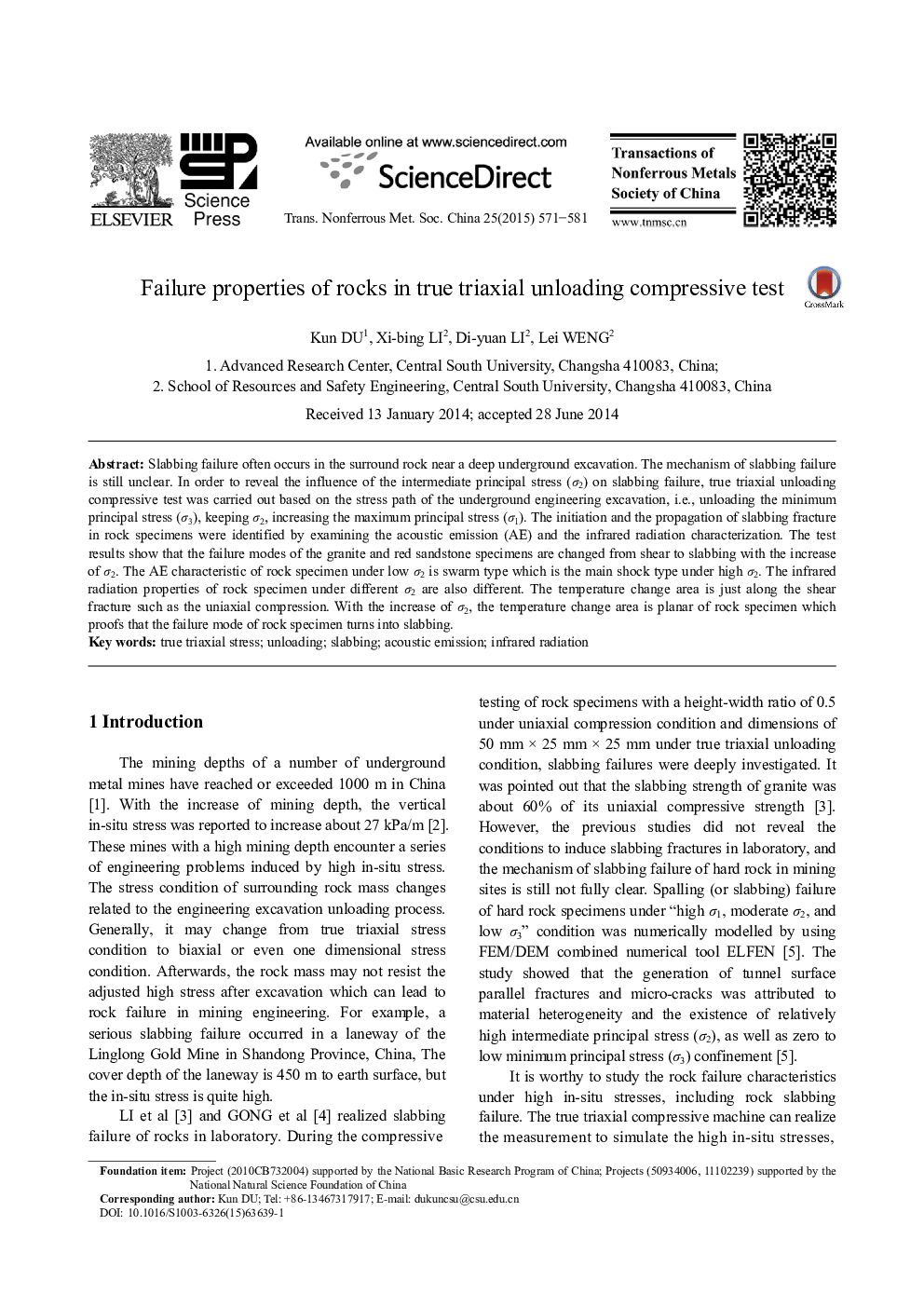| Article ID | Journal | Published Year | Pages | File Type |
|---|---|---|---|---|
| 1636760 | Transactions of Nonferrous Metals Society of China | 2015 | 11 Pages |
Abstract
Slabbing failure often occurs in the surround rock near a deep underground excavation. The mechanism of slabbing failure is still unclear. In order to reveal the influence of the intermediate principal stress (Ï2) on slabbing failure, true triaxial unloading compressive test was carried out based on the stress path of the underground engineering excavation, i.e., unloading the minimum principal stress (Ï3), keeping Ï2, increasing the maximum principal stress (Ï1). The initiation and the propagation of slabbing fracture in rock specimens were identified by examining the acoustic emission (AE) and the infrared radiation characterization. The test results show that the failure modes of the granite and red sandstone specimens are changed from shear to slabbing with the increase of Ï2. The AE characteristic of rock specimen under low Ï2 is swarm type which is the main shock type under high Ï2. The infrared radiation properties of rock specimen under different Ï2 are also different. The temperature change area is just along the shear fracture such as the uniaxial compression. With the increase of Ï2, the temperature change area is planar of rock specimen which proofs that the failure mode of rock specimen turns into slabbing.
Related Topics
Physical Sciences and Engineering
Materials Science
Metals and Alloys
Authors
Kun DU, Xi-bing LI, Di-yuan LI, Lei WENG,
